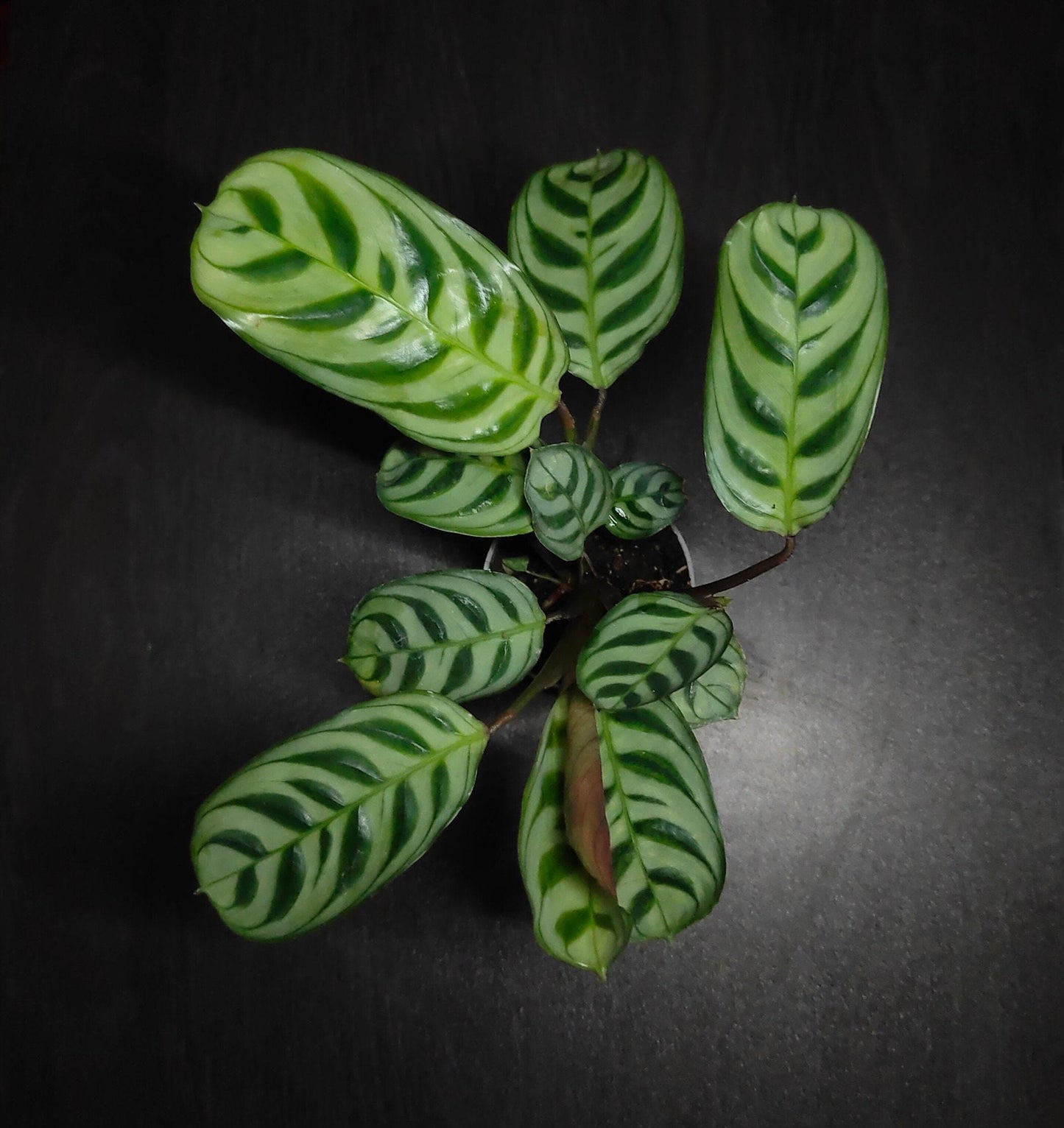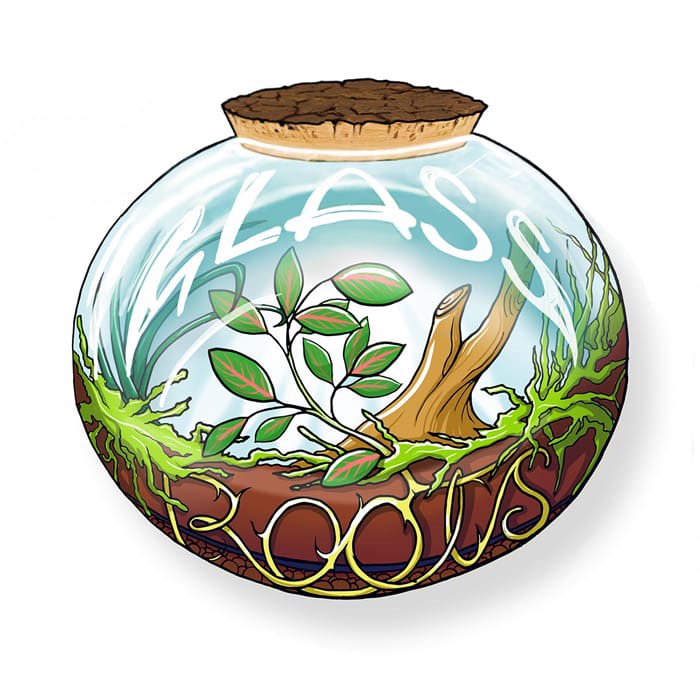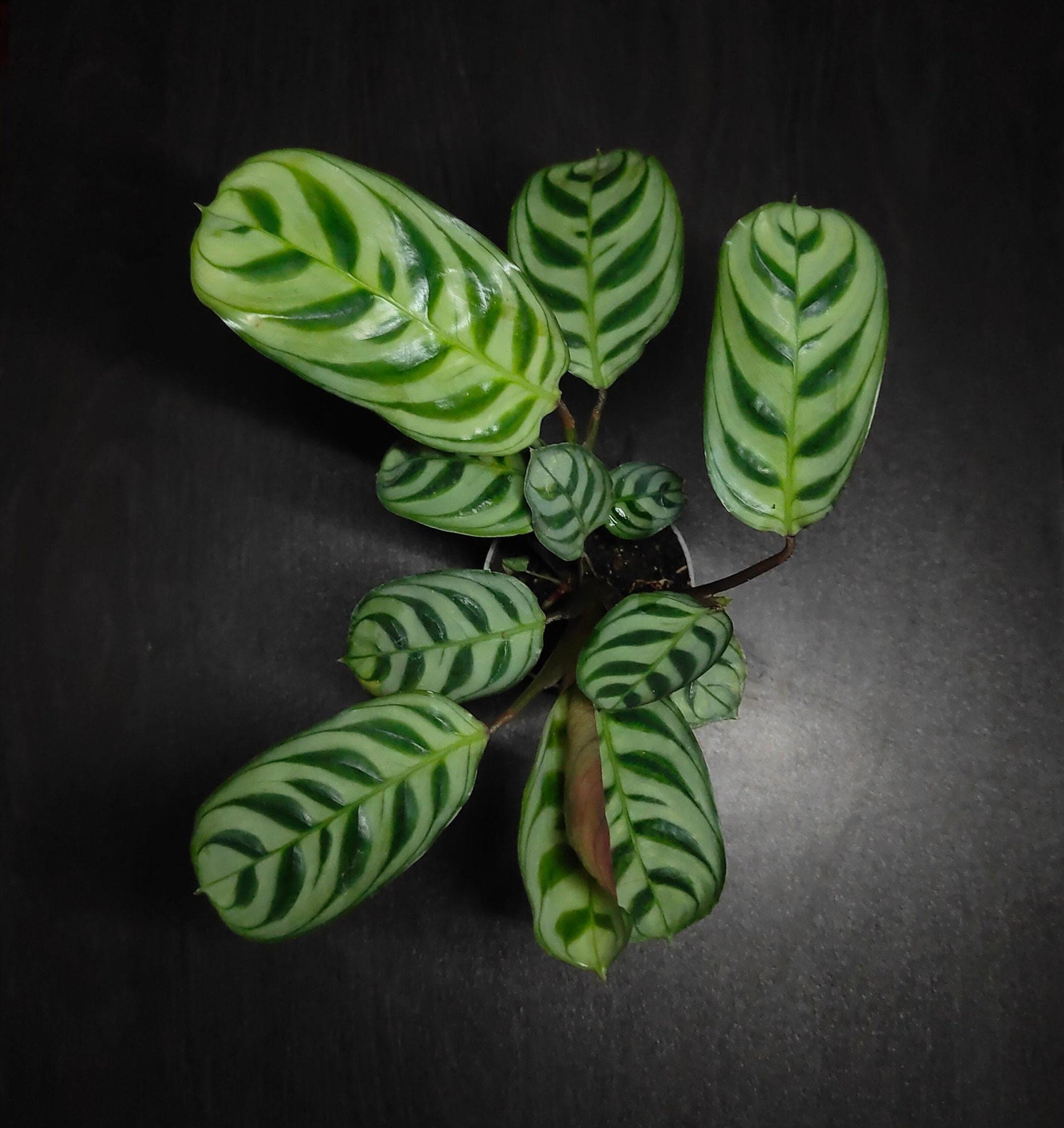Glassroots
Ctenanthe burle-marxii calathea 6cm pot ( terrarium plant )
Ctenanthe burle-marxii calathea 6cm pot ( terrarium plant )
Couldn't load pickup availability
1x Ctenanthe burle-marxii in 6cm pot - Perfect size for a terrarium. Ctenanthe burle-marxii, commonly known as the Fishbone Prayer Plant, is a captivating tropical plant celebrated for its stunning foliage and unique pattern. This member of the Marantaceae family is native to the rainforests of Brazil, where it thrives in the warm, humid understory.Foliage: the leaves of Ctenanthe burle-marxii are its most striking feature. Each leaf is elliptic to lance-shaped, showcasing a vivid green colour adorned with silvery-grey markings that resemble fishbones, giving the plant its common name. The underside of the leaves is a rich purplish-red, adding an extra layer of visual interest. The smooth, glossy texture of the leaves enhances their ornamental appeal.Growth Habit: This plant typically grows to a height of 12 to 24 inches and spreads to a similar width, forming a dense, clumping mound of foliage. New shoots emerge from the base, ensuring the plant remains full and lush over time.Flowers: While Ctenanthe burle-marxii can produce small, white flowers on short stalks, these blooms are inconspicuous and not the main attraction. The plant is primarily grown for its exquisite foliage.Care Requirements:
Light: Prefers bright, indirect light. It can tolerate lower light conditions but should be protected from direct sunlight, which can scorch the leaves.
Water: Enjoys consistently moist soil without being waterlogged. Water when the top inch of soil feels dry. High humidity is beneficial; regular misting or the use of a humidifier can help maintain humidity levels.Soil: A well-draining, peat-based potting mix with added perlite or sand for improved drainage is ideal.
Temperature: Thrives in temperatures between 60-75°F (15-24°C). It is not frost-tolerant and should be kept away from drafts and sudden temperature changes.Fertilization: During the growing season (spring and summer), a balanced, water-soluble fertilizer can be applied monthly. Reduce fertilization in the fall and winter.Pruning and Maintenance: Regular pruning is not necessary, but removing yellowing or damaged leaves helps maintain the plant's appearance. Repotting every 2-3 years or when the plant outgrows its container is recommended.Propagation: Propagation is typically done through division. During repotting, the plant can be divided into smaller clumps, each with roots and a few leaves, and then potted separately.Common Problems:
Pests: Susceptible to spider mites, mealybugs, and aphids. Regular inspection and treatment with insecticidal soap or neem oil can manage infestations.Diseases: Overwatering can lead to root rot, while overly wet conditions can cause fungal or bacterial leaf spots. Ensuring proper drainage and good air circulation is key.Environmental Stress: Brown leaf tips can result from low humidity or chemical-laden tap water. Using distilled water and increasing humidity can help. Leaf curling can indicate too much light, low humidity, or underwatering.We recommend purchasing multiple plants to make the most of the postage cost.
Materials
Materials
Shipping & Returns
Shipping & Returns
Dimensions
Dimensions
Care Instructions
Care Instructions


